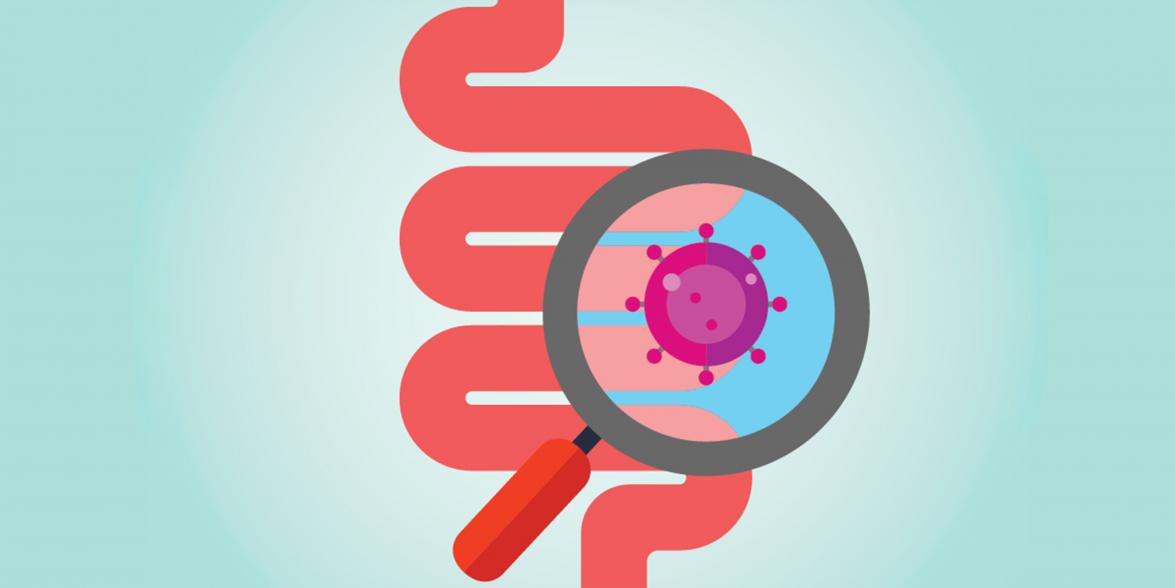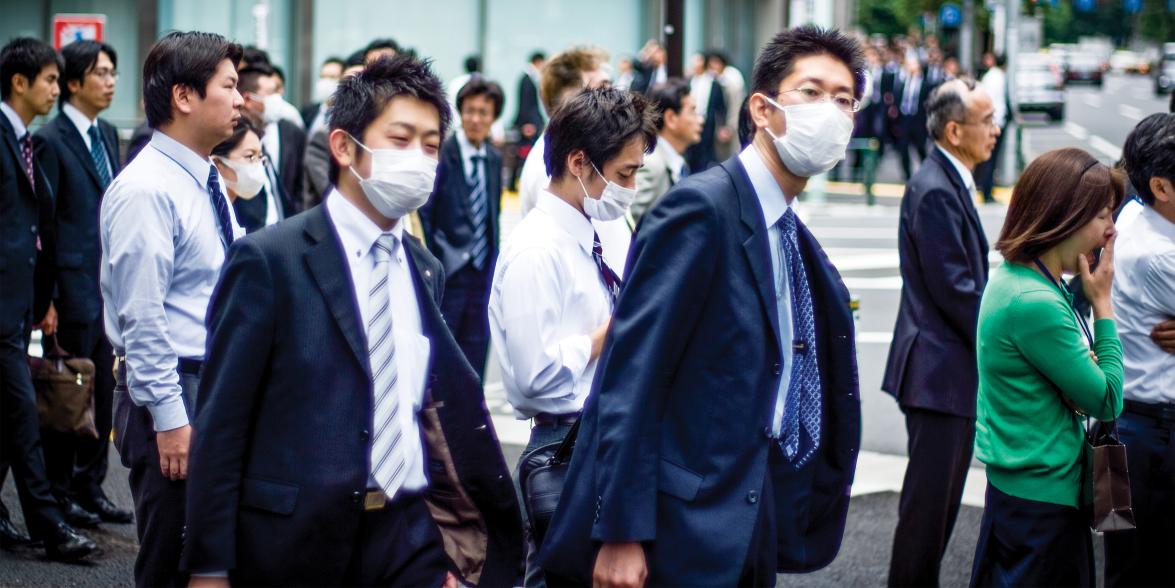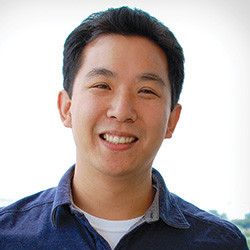
The Microbiome Goes Viral
Why virologists care about the bacteria in your gut.
The trillions of microbes in and on our bodies, known collectively as the microbiome, play a big role in human health—and disease.
Virologists are taking note. The gut microbiome’s impact on viral infections will be the focus of a satellite session at the American Society for Virology’s 37th annual meeting July 14–18 at the University of Maryland, College Park.
“The gut microbiome seems to be able to alter the immune system’s response to infection, thereby changing the infection from sometimes mild or unapparent to very severe,” says Andrew Pekosz, PhD, a professor in Molecular Microbiology and Immunology and ASV president-elect.
Bloomberg School students and faculty at the event will present research on topics including Zika and influenza viruses, brain swelling caused by mosquito-borne viruses, and the spread of viral proteins in neurons.
Expected to attract about 1,500 scientists, the event will also provide a wealth of career information for young researchers.
“The meeting is always focused primarily on students and post-docs and their careers and allowing them to present their findings,” Pekosz says.

Constant Vigilance
For 20 years, the Center for Health Security has prepared for some of the deadliest public health threats.
Bioterrorism, global pandemics and natural disasters are the stuff of dystopian nightmares.
They’re also among the potential crises the Center for Health Security regularly considers in its work to strengthen response and prevent large-scale public health disasters.
Celebrating its 20th anniversary—and one year since its return to the School from the University of Pittsburgh Medical Center, its home from 2003 to 2017—the Center was launched by former dean and bioterrorism expert D.A. Henderson, MD, MPH ’60, who led the global campaign that eradicated smallpox in 1980.
In much of his later work, Henderson prioritized improving America’s health security, holding top government positions and advising several presidents. He sounded the alarm on the emerging bioterrorism threat and questioned the ability of governments to respond to substantial health emergencies such as a potential anthrax attack.
He was right to worry.
“Since [1998], we’ve seen not only the anthrax events of 2001, but H5N1 bird flu emerge in Asia, the SARS epidemic—which had a profound effect on the global economy and tourism—H1N1, Ebola, Zika, MERS,” says Center Director Tom Inglesby, MD. “One event after the next has shown how important it is to be prepared for and able to respond to infectious disease emergencies.” An influenza pandemic, he says, tops the list of potential global health security threats.
Powerful weather events, advances in biotechnology and threats of weaponized biological agents further underscore the need for global vigilance in preparation and response. Improving government programs and policy around these threats is a Center priority.
Much of the work going on in health security is “unheralded—when prevention and preparedness for emergencies is successful, crisis is averted,” Inglesby says. “In periods in between crises, people neglect these issues. We need to find ways to build systems that are sustainable, that don’t require a crisis to motivate us to do what we need to do.”
The Center for Health Security is housed in the Department of Environmental Health and Engineering.

Ending In Vivo
When will better alternatives to animal testing be the new standard?
“Cruelty-free” product labels might appeal to animal-loving consumers, but this singular focus on animal welfare overlooks some compelling truths: Animal testing is expensive, slow and unreliable.
“We are not 70-kilogram rats,” says Thomas Hartung, MD, PhD, director of the Center for Alternatives to Animal Testing. As predictors of drugs’ effects on humans, mice and rats are only 40 to 50 percent accurate. Animal testing also costs millions of dollars, and results can take four to five years—eons in product development.
A comprehensive shift away from animal testing will require faster, cheaper and more accurate alternatives such as in silico, or computer modeling. The second Pan-American Conference for Alternative Methods in Brazil, August 23–24, which Hartung is coordinating, will gather 250 industry experts, academics and animal welfare proponents to share new methods for assessing things like eye irritants and skin allergies with hopes of expanding methods globally.
“We can learn from each other,” Hartung says. “But we also need to understand the importance of international acceptance of these approaches.”
The Center for Alternatives to Animal Testing is housed in the Department of Environmental Health and Engineering.
Trending
The Word on Wolfe Street
FOLLOW
In an April 19 Washington Post story on a 10 percent drop in opioid prescriptions in 2017, Joshua Sharfstein observes, “I think the challenge is to continue to go down, but in a way that doesn’t go overboard for patients” who benefit from the use of opioids for pain.
READ
The cost of a large foodborne illness outbreak at a restaurant could come with a $2.6 million price tag. Sarah Bartsch, whose research estimated the financial toll of foodborne illness outbreaks to restaurants, tells Popular Science in an April 16 story that investing in food safety measures makes good business sense.
HEAR
Gerard Anderson explains in an April 9 NPR piece on dramatic differences in the costs of two CT scans in Fort Myers, Florida—one at an imaging center, the other at a hospital in a large health system—that hospital consolidation in recent years has been driving prices ever higher.
Share this - My Public Health “AHA” Moment

Emily E. Haroz
Mental Health
I saw a presentation on the Applied Mental Health Research group’s Uganda work. I realized then that there were tools you could use to answer if a program worked. I immediately switched gears from clinical psychology to public health and have never looked back.

Vadim Zipunnikov
Biostatistics
My postdoctoral fellowship at JHSPH introduced me to public health. Since then, almost every day brings new “aha” moments!
EVENTS WATCH
R WE HAVING FUN YET?
3 Questions for Roger Peng, PhD, MS
Fans of R, the popular open source statistical software package, will meet up at useR! 2018, the July 10–13 conference in Brisbane, Australia. Biostatistics professor Roger Peng is a keynote speaker.
How has R evolved?
When I started doing statistics in the late ’90s, R barely existed and the only options were expensive commercial software packages. With the data science explosion, being able to program in R is an incredibly valuable skill.
What goes on at an R conference?
The conference brings people together who use R in different ways, both academic and commercial, to share what they’ve learned. The manner in which people use R is now very diverse.
How do you approach teaching R?
In the past, I really had to start from scratch and introduce students to the whole system. Nowadays, most of them have seen it at least in college, so it’s forced me to rethink how I teach it to people.
